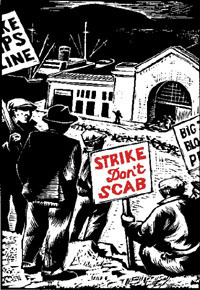|
|
|
|
|
|
Advisory Panel Would Relax Rules for Co-Pilot Experience
Advisory Panel Would Relax Rules for Co-Pilot Experience
A proposal is likely to rekindle long-running safety debate about mandatory flying hours
http://www.wsj.com/articles/advisory-panel-would-relax-rules-for-co-pilo...
An American Airlines fleet training manager at the controls of a Boeing 787 Dreamliner over New York. A Federal Aviation Administration advisory panel is moving toward recommending the U.S. relax minimum-flight-time requirements for new pilots. PHOTO: LM OTERO/ASSOCIATED PRESS
By ANDY PASZTOR
Sept. 2, 2016 5:30 a.m. ET
U.S. airlines would be able to hire new pilots with far less cockpit experience than currently required under a proposal aimed at addressing a staffing shortage that is likely to rekindle a debate over aviation safety.
Certain military pilots with as little as 500 hours of flying experience would be allowed to become commercial co-pilots, according to people familiar with the details, compared with the mandatory at least 750 hours required today. That is already down sharply from the minimum of 1,500 hours set for typical non-military pilots in 2013.
The proposal comes from a joint industry-labor group created by the Federal Aviation Administration to help it draft new regulations amid worries by the airline industry that there aren’t enough pilots to keep up with demand. None of the recommendations have been released, and further details are expected to remain confidential until top FAA officials decide how to proceed.
Co-pilots, who are sometimes called first officers, without a military background or an academic degree related to aviation would still need at least 1,500 hours of total flight time to be eligible to be hired by carriers, said the people familiar with the panel’s proposals. The committee, which includes representatives of pilots, airlines and passengers, didn’t recommend any changes for requirements to fly as a captain. Captains need 1,500 hours among other requirements, but airlines usually require more flight time for them than federal minimums.
The proposals reflect escalating pressures many commuter carriers face in attracting and keeping enough pilots under existing regulations. Despite increased salaries and the introduction of signing and retention bonuses at some carriers, commuter airlines remain particularly vulnerable to pilot staffing shortfalls.
Some commuter operations worry they aren’t attracting the overall quality of applicants they would like, while others fret about the impact of larger carriers hiring away commuter pilots with incentives that include higher pay and more-secure career advancement prospects. Larger U.S. airlines, meanwhile, confront their own staffing issues with the impending retirements of tens of thousands of senior pilots over the next decade.
Industry initiatives so far “haven’t fixed the basic problem, just mitigated and probably delayed the worst consequences of the pilot shortage,” said Roger Cohen, former president of the Regional Airline Association, the leading trade association representing commuter operators. The group, which has been battling to change existing standards for years, declined to comment on the new recommendations.
An FAA spokeswoman said only that officials were reviewing the proposals.
‘We have found no evidence that high time [experience] makes better pilots.’
—Paul Kolisch, airline training official
The panel’s report follows earlier safety enhancements imposed by Congress and the FAA in the wake of the high-profile crash of a Colgan Air turboprop in 2009 near Buffalo, N.Y. Investigators determined that the captain had a spotty training record and responded incorrectly to automated cockpit warnings.
Confronting pressure from lawmakers, outside safety critics and families of the more than four dozen victims who died in the crash, FAA officials in 2013 announced regulations raising experience and training requirements. Instead of what had been the mandatory minimum of 250 hours flight time for first officers, the agency adopted a sliding scale from 750 to 1,500 hours, depending on military and educational background.
Since then, commuter carriers in particular have chafed under the requirements, arguing that attaining the 1,500-hour or even 750-hour threshold poses often insurmountable financial and other obstacles for many prospective applicants. So the FAA convened the panel to explore possible alternative paths with lower entry barriers.
Some agency critics contend the number of hours spent behind the controls of an aircraft, by itself, doesn’t guarantee quality training. Other safety advocates, including pilot-union leaders, stress that routine mentoring of new hires by veteran captains is essential to safety.
“We have found no evidence that high time [experience] makes better pilots” when they are first hired, Paul Kolisch, a senior training official at Delta Air Lines Inc.’s Endeavor Air commuter arm, said during a safety conference last year.
The FAA asked the latest panel to study potential adjustments within the framework of previous congressional mandates. The group of experts, for example, didn’t look at changing current requirements that all co-pilots must be trained and tested on the specific aircraft model they fly.
Write to Andy Pasztor at andy.pasztor@wsj.com
-

- Log in to post comments
- Printer-friendly version



